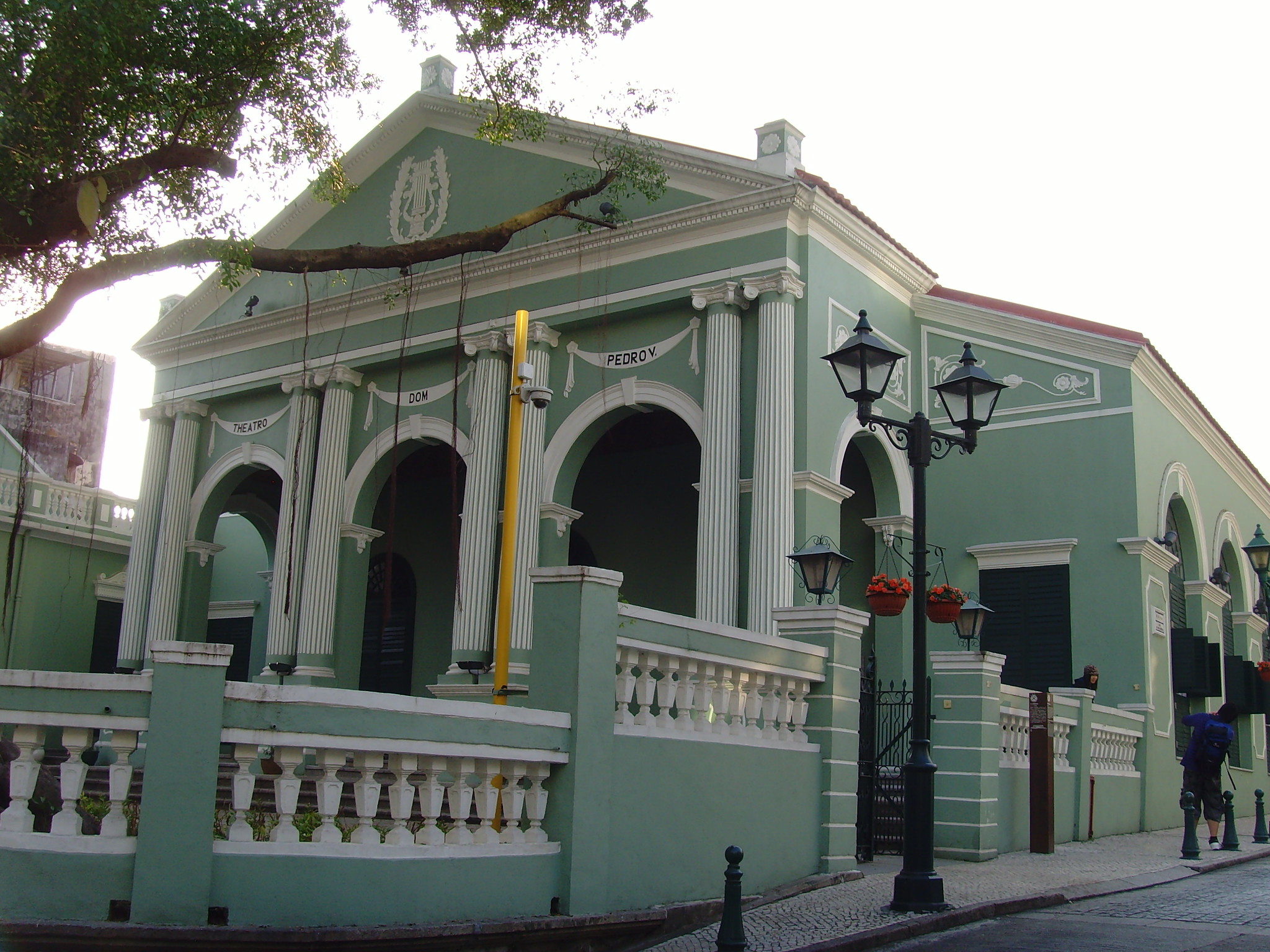The Dom Pedro V Theatre, nestled in the heart of Macau’s historic center, stands as a testament to the city’s rich cultural heritage and colonial past. This charming neoclassical building, with its distinctive green facade and white trim, has been a focal point of Macau’s performing arts scene for over 150 years.
Built in 1860, the theatre was named after Portugal’s young King Dom Pedro V, who had tragically passed away the year before at the age of 24. The construction of this cultural landmark was spearheaded by Portuguese merchants and local Macanese residents who sought to bring a touch of European sophistication to the Far East. At the time of its completion, it was hailed as the first Western-style theatre in China, marking a significant milestone in the region’s architectural and cultural development.
The theatre’s design is a beautiful blend of European and Chinese influences, reflecting Macau’s unique position as a meeting point between East and West. Its neoclassical exterior features elegant columns and arched windows, while the interior boasts intricate Chinese-style decorations, creating a harmonious fusion of cultural aesthetics.
As you step inside the Dom Pedro V Theatre, you’re immediately transported back in time. The intimate auditorium, with its horseshoe-shaped seating arrangement, can accommodate around 300 spectators. The ornate ceiling, adorned with delicate plasterwork and a grand chandelier, adds to the theatre’s old-world charm. The stage, though modest in size, has hosted countless performances over the years, from opera and theatre to concerts and cultural events.
Throughout its history, the Dom Pedro V Theatre has weathered many storms, both literal and figurative. It has undergone several renovations and restorations to preserve its structural integrity and historical significance. One of the most extensive renovations took place in the 1930s when the theatre was updated to accommodate modern theatrical productions and improve audience comfort.
Despite these changes, great care has been taken to maintain the theatre’s original character and architectural features. Today, visitors can still admire the original wooden chairs, antique light fixtures, and vintage stage equipment that harken back to the theatre’s early days.
The Dom Pedro V Theatre has played a crucial role in Macau’s cultural life for generations. It has been a venue for important civic events, political gatherings, and even served as a refuge during times of conflict. During World War II, for instance, the theatre became a temporary shelter for residents seeking protection from air raids.
In recent years, the Dom Pedro V Theatre has experienced a renaissance of sorts. With Macau’s inscription on the UNESCO World Heritage List in 2005, there has been renewed interest in preserving and promoting the city’s historical landmarks. The theatre now hosts a diverse range of performances, from traditional Chinese opera to contemporary music concerts, continuing its legacy as a cultural bridge between East and West.
Visitors to Macau can explore the Dom Pedro V Theatre as part of a guided tour or attend one of its many performances. The theatre’s location in the heart of Macau’s historic center makes it easily accessible and a must-see attraction for history buffs and culture enthusiasts alike.
As Macau continues to evolve and modernize, the Dom Pedro V Theatre stands as a proud reminder of the city’s rich cultural heritage. Its enduring presence in the urban landscape serves as a link to Macau’s past while continuing to inspire and entertain new generations of residents and visitors. The theatre’s journey from a colonial-era cultural outpost to a beloved local institution is a testament to the enduring power of art and architecture to shape a city’s identity and bring people together across cultures and generations.
The Dom Pedro V Theatre, located in Macau, stands as a significant cultural landmark and historical monument. Built in 1860, it was the first Western-style theater in China and remains an important example of Portuguese colonial architecture. The theater has played a crucial role in Macau’s cultural development, hosting various performances and events throughout its history. Its neoclassical design, ornate interior, and well-preserved structure continue to attract visitors and serve as a reminder of Macau’s unique blend of Eastern and Western influences. The Dom Pedro V Theatre’s enduring presence and ongoing use as a performance venue underscore its importance in preserving Macau’s cultural heritage and fostering artistic expression in the region.

